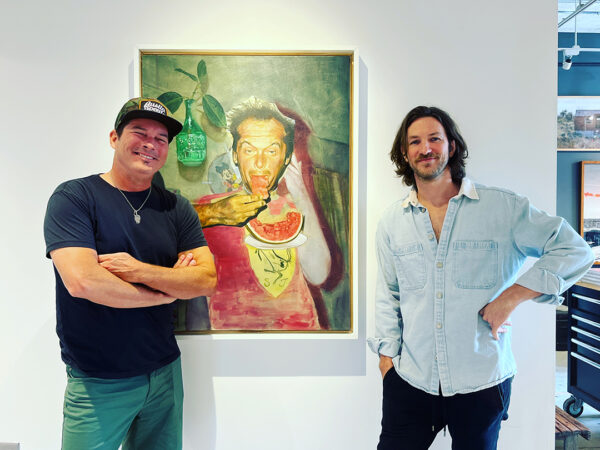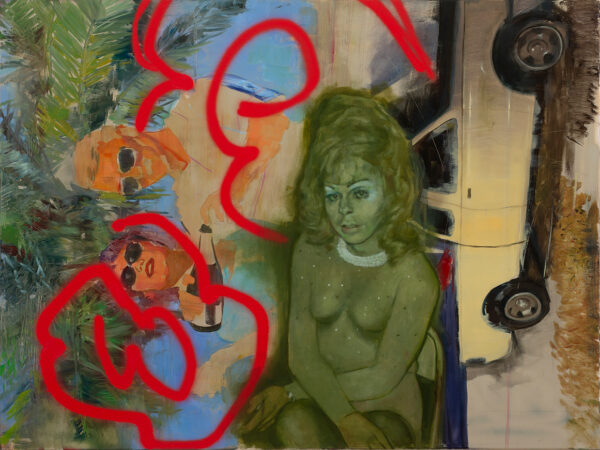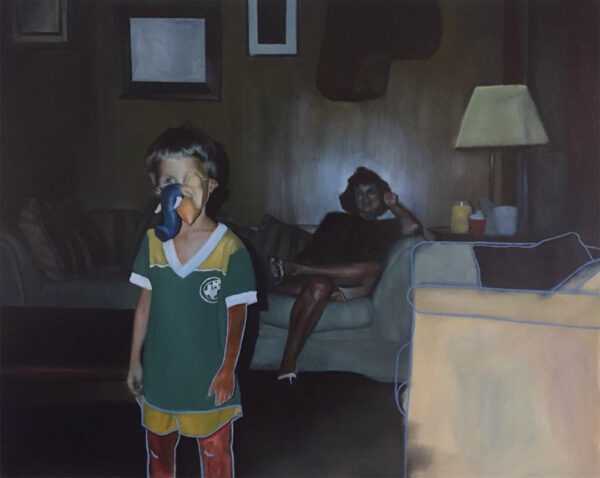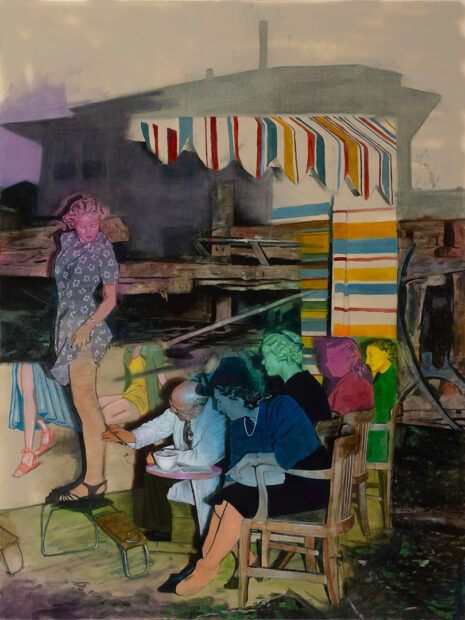Jay Wilkinson has been a significant part of the Fort Worth art scene since he moved to the city in 2009. From organizing shows with friend and collaborator Jeremy Joel through their organization Bobby on Drums in the mid-2010s and co-founding the nonprofit Art Tooth to producing large-scale sculptures at Arts Goggle and exhibiting his work at local galleries like Fort Works Art (FWA), where he is now the Gallery Manager, Wilkinson is as well known for his support of local artists as he is for his own artistic practice.
As many artists/artworkers can attest, juggling art production and arts administration is challenging. In 2021, Wilkinson opened the small gallery Dang Good Candy in Fort Worth’s Downtown area known as Sundance Square. After operating the space for nearly two years, he closed the gallery and was hired on at FWA. Recently, Wilkinson told me that with so much on his plate, he had been in an artistic slump for the past year or so, until Bale Creek Allen approached him about presenting a solo show at BCA Gallery.
Allen and Wilkinson became fast friends when the two operated neighboring galleries in Sundance Square. As gallerists, they had two very different approaches — Allen often exhibits established artists who are working on a national scale, like Sandy Skoglund, James Surls, and Nic Nicosia, while Wilkinson showed emerging local artists in a more experimental space. Throughout that time, the two often played with the idea of hosting a collaborative show, joking that they could cut a hole in the wall that adjoined their galleries and each present a show in the other’s space.
Once Dang Good Candy closed and BCA Gallery moved out of downtown, Wilkinson and Allen remained close. Allen, who was enamored with Wilkinson’s artistic style and talent, took note of the fact that Wilkinson had not been focusing on his own artistic production and offered the show as a way to “climb out of the ditch.” And the opportunity worked. In the course of one month, Wilkinson painted five new pieces, which make up the majority of his current show, Free Dirt.
The seven paintings in the exhibition are reminiscent of Wilkinson’s earlier work while also signifying artistic and conceptual growth and expansion. Wilkinson is known for his photorealistic style, which combined with areas of thin washy paint creates a dreamy and distorted atmosphere. Beyond this, his work has often contained a hint of absurdity, featuring unexpected elements, like people in masks or costumes, and normal childhood scenes taken out of context, such as children contorting their bodies as they play a game of Twister. Wilkinson’s use of color has also been key to his artistic sensibility. Whether bright pops of color fill a background or a spray-painted line simply juts across an otherwise photorealistic painting, color has also served to disrupt the otherwise realistic scenes that Wilkinson sets, disorienting the viewer.
Many of these elements are present in Wilkinson’s newest series of paintings, however, one of the biggest shifts has been in the content of the work. Some of Wilkinson’s earliest pieces draw on old family photographs and seem to be the artist exploring and coming to terms with his childhood. Though these pieces often depict playful moments, there is simultaneously a sense of foreboding, as if everything was on the verge of going wrong. In one of Wilkinson’s other series, the content is pulled from photographs of friends, often from party scenes. Images of young adults smoking, drinking, and being raucous hold the same sense of impending doom and detachment that the childhood paintings exude. In his newest works, Wilkinson continues to draw from personal photographs, but also brings in larger cultural moments and memories, making the work both deeply personal and more universal.
In the painting Part of the World, Wilkinson starts with an image of Howard Ashman, a playwright, lyricist, and stage director who worked with Alan Menken on the 1982 off-broadway musical Little Shop of Horrors, as well as on music for Disney’s Beauty and the Beast, The Little Mermaid, and Aladdin. Ashman, a gay man, died from AIDS during the pair’s final collaboration, before the music for Aladdin could be completed. After watching a documentary and learning about Ashman’s life, Wilkinson saw his story as a mirror for what’s happening today. We live in a time where governments are banning the dissemination of information, whether via books or curricula, about the lives of people who identify as part of the LGBTQ+ community. Simultaneously and antithetically, even people who discriminate against the community love and enjoy the contributions people like Ashman make to our cultural landscape.
In Wilkinson’s piece, sections of the image of Ashman and Menken are more detailed while other areas fade into the background, which includes scenes from photographs Wilkinson took while visiting Isla de las Muñecas (The Island of the Dolls), south of Mexico City. Dilapidated buildings and a foggy sky place Ashman and Menken in an unsettling scene. To this background, Wilkinson adds a looming King Kong with wide eyes and an open mouth, as well as a melancholic image of his wife, Peyton Rhodes, in a tub with elaborate makeup and a billowing dress.
Without speaking with the artist, it’s unlikely I would have gleaned all of his specific references, but the tone of the piece is striking and stayed with me. The haziness, the push and pull between the various sourced images, and the flow of color throughout make the painting feel like a distraught memory of a dreamscape. It is confusing and familiar and unearths my own deeply rooted experiences and memories.
Like other paintings on view in Free Dirt, Part of the World plays between a place of individual and collective memory. There are layers of references, and each viewer may understand only select parts of those references, but the work is successful in creating a mysterious mood and leaving space for the viewer to insert themselves and fill in the gaps.
What strikes me most about Wilkinson’s newest body of work is how both his process of composing a painting and the final output, visual collages of people, places, and objects, mirror the way in which artificial intelligence (AI) generates art from other sources to create often otherworldly scenes. While this connection isn’t purposeful by the artist, it becomes another nod to the current cultural moment in which we’re living. And it makes sense that there would be some parallels here. Obviously, humans have trained AI to create new images much in the same way that we do; the computers are mining source material from across human creation and are merging, changing, and warping it into something new.
We draw on an array of past memories, experiences, and artifacts to form new thoughts and ideas. In effect, nothing is “original”; everything is a reverberation of the past. While some artists may shy away from this mode of thinking, Wilkinson embraces it. Through his art he announces that he is shaped by his history, his friends, his wife, and the world as it is now and as it has been formed over the years. Beyond being a skillful artist, the beauty in Wilkinson’s work is its ability to create unexpected and powerful scenes from the scraps of the past.
Free Dirt is on view at Bale Creek Allen Gallery in Fort Worth, Texas through August, 28, 2023.







